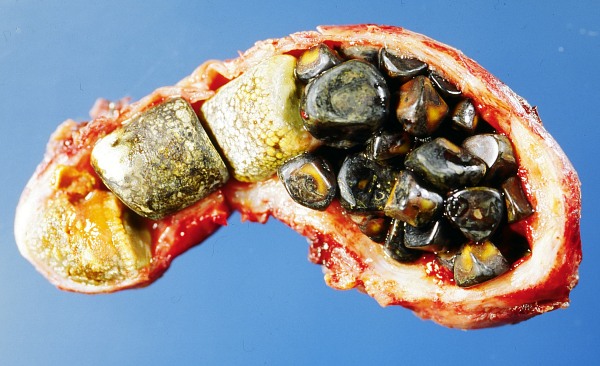Did you know?
You can double click on a word to look it up on TermGallery.
You can double click on a word to look it up on TermGallery.
Meanings of cholelithiasis in English
Russian
каменная болезнь Spanish
colelitiasis 
Usage of cholelithiasis in English
1
The first case was a 64-year-old man with cholelithiasis and chronic cholecystitis.
2
Background: Laparoscopic cholecystectomy is the treatment of choice for symptomatic cholelithiasis.
3
Twenty-eight AIDS patients had cholelithiasis, six with coexistent opportunistic gallbladder infection.
4
It has been hypothesized that nonoral MHT may reduce the risk of cholelithiasis.
5
Logistic regression was performed to analyze independent associations between thyroid function and cholelithiasis.
6
The incidence of cholelithiasis and acute cholecystitis was evaluated by CT scan and abdominal ultrasound.
7
This has prompted considerable debate regarding the management of cholelithiasis discovered incidentally during open aortic reconstruction.
8
Conclusion: There is an association between thyroid and gallstone disease with a gender-specific relation between hypothyroidism and cholelithiasis.
9
Surgeries were divided into two groups as well: elective surgery for cholelithiasis and emergency surgery for acute cholecystitis.
10
Sex, family history of cholelithiasis, use of oral contraceptives and serum lipids were not independent risk factors for gallstones.
11
Methods: One hundred and fifty-seven patients over 60 years old affected by cholelithiasis have been treated with minimally invasive techniques.
12
Aim of this study is to evaluate the familial risk of cholelithiasis in non hospitalized subjects with and without gallstones.
13
Therefore a preoperative or intraoperative diagnosis of cholelithiasis does not necessitate cholecystectomy in the setting of planned endovascular AAA repair.
14
The incidence of delayed symptomatic cholelithiasis was 1.6 per cent (one of 64).
15
The incidence of postoperative symptomatic cholelithiasis is 1.6 per cent (one of 64).
16
There was also cholelithiasis.
About this term
Translations for cholelithiasis
Russian
Spanish
Cholelithiasis through the time

